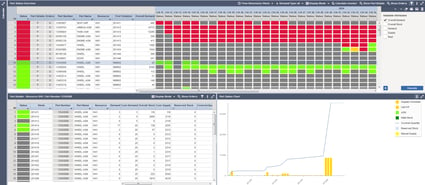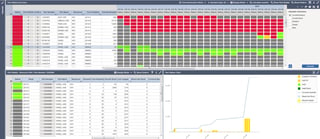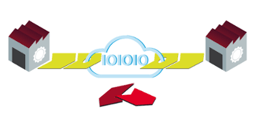How In-Memory Databases Can Solve Supply Chain Problems
Nick Ostdick - March 03, 2016

Ask any supply chain planner (SCP) or manager about their most pressing needs and you’ll hear the same thing again and again: “I need the ability to view up-to-the minute information at all points along the supply chain using integrated data from different sources to forecast and prevent any potential bottlenecks or slow-downs.”
And the savviest SCP might also toss in: “Oh, I’d like to be able to share this information in real-time with others in the supply chain process, or perhaps even with my sales reps.”
Sounds like this SCP is asking a lot, right?
As companies expand globally, supply hubs are established in new and more remote parts of the world, and the need for more advanced supply chain logistics and reporting becomes more and more important, this SCP may discover new or different needs in order to maintain a sustainable return on investment (ROI), reduce costs, and promote growth across the company.
This is where in-memory databases cannot only meet the needs of today’s SCP but also provide an interesting window into what the future of supply chain planning and logistics may look like.
 What is an in-memory database?
What is an in-memory database?
Let’s keep this simple and talk about your morning coffee. Imagine getting in your car and driving down the street to your local coffee shop. You have to walk out your front door, get in the car, get out at the coffee shop, get back in with your coffee, and walk back into your house. Now imagine simply pouring your coffee from a countertop coffee machine in your kitchen.
That’s the main difference between in-memory databases and disk-drive memory, which is what many intelligent supply chain planning systems used to utilize. Disk-drive memory does a majority of its data processing and communication on external disk drives, requiring many transfers of data from disks to the system and vice-versa, whereas in-memory databases function primarily within the computer itself, thus eliminating time-consuming transfers of data and communication.
In-memory databases operate quicker, with more power, and with more capability and efficiency to give SCPs more control over the reporting and analytics they need to make intelligent, informed decisions about supply levels, freight costs, and other supply chain logistics.
Benefits
Now that we know what exactly in-memory databases are, it’s easy to see how SCPs would benefit from incorporating them into their intelligent planning solutions.
1). Data: In-memory databases, with their speed and power, allow SCPs to access up-to-the minute data from all points across a supply chain, replicate that data, and distribute it to those who need it. In-memory data provides SCPs with the capability to make complex calculations about supply levels, costs, and potential supply disruptions on the fly, as well as analyze the metrics and outcomes of those calculations with little lag time.
2). Sources: We all know the value in seeking more than one source for information or the answer to a question, and supply chain planning and processing is no different. SCPs need the ability to review multiple inputs and channels from multiple vantage points of the supply chain process in order to make financially sound and education decisions. In-memory data allows SCPs to access a host of sources and inputs to see a supply chain from a number of angles, which fosters greater overall visibly and transparency of the supply landscape.
3). Processing: In the age of Big Data, 3D Printing, and The Internet of Things, speed and power are of the essence. These technological advancements in the supply chain industry demand faster processing of data in order to create accurate, comprehensive reporting SCPs can review and distribute without delay. Gone are the days of waiting until the end of a supply chain cycle to review data and run analytics on that data. Leveraging in-memory databases puts SCPs in the driver seat when it comes to processing large volumes of data at a moment’s notice.
4). Simulations: Perhaps one of the most crucial points in favor of in-memory databases is the ability to run advanced, detailed simulations in order to identify potential bottlenecks along the supply chain and adjust real-world practices accordingly. In-memory databases give SCPs the capability to run these simulations without disruption to other supply chain operations and provide SCPs the information to generate accurate forecasts that will help eliminated wasted costs and increase productivity.
Leveraging in-memory databases
 The supply chain industry is on the cusp of some pretty big shake-ups when it comes to intelligent planning and integrated, ‘smart’ systems and software. As we discussed in earlier blog entries, 2016 is promising to be the year SCPs must adapt a number of advanced technological and software-based innovations if they hope to stay relevant and competitive in today’s market.
The supply chain industry is on the cusp of some pretty big shake-ups when it comes to intelligent planning and integrated, ‘smart’ systems and software. As we discussed in earlier blog entries, 2016 is promising to be the year SCPs must adapt a number of advanced technological and software-based innovations if they hope to stay relevant and competitive in today’s market.
Ditching disk-memory data in favor of in-memory data is a crucial first step for any company looking to streamline the analysis of data and communication and drive growth from a value-added standpoint. Simply put, in-memory data, with its capability to make supply chain planning and decision-making more visible and transparent, is a must-do for any SCP who is asked: “What are your most pressing needs?”
LATEST POSTS
- Understand Circular Economy in The Manufacturing Industry
- How Can Industry 4.0 IT Integration Be Achieved Smoothly?
- The Significance of Order Sequencing in Discrete Manufacturing
- How to improve your Supply Chain Management: The Power of Control Towers
- Optimizing Human Resource Scheduling in Manufacturing: A Technological Approach



